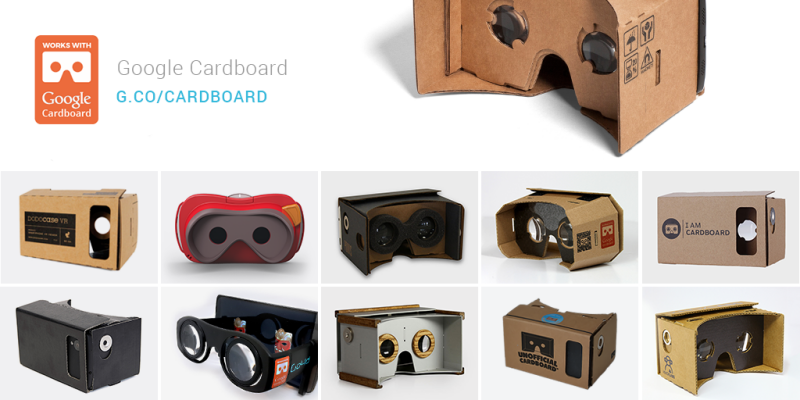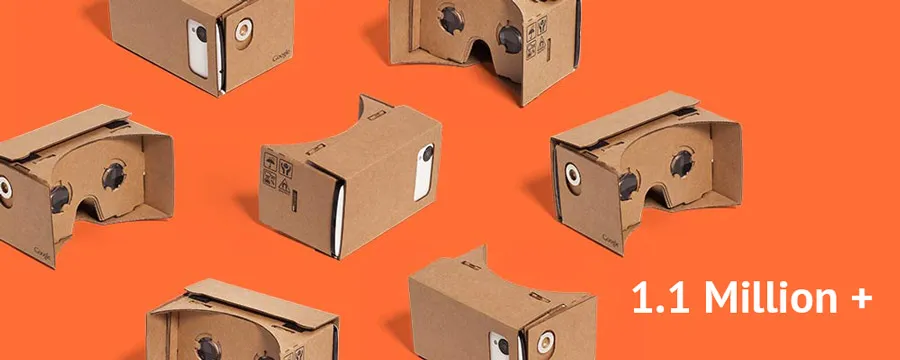Google Cardboard might be one of the more divisive devices in the VR community, but you can’t say it’s not the most popular. Today, we were able to confirm with Google that since the Google Cardboard was announced as a ‘20% project’ at Google I/O last year (later becoming a full on project), over 1.1 million of the inexpensive virtual reality viewers have made their way into the marketplace.
Before you go getting too excited over that figure, it is worth noting that a large number of those have been distributed as giveaways at events like Comic Con, where over 103,000 Cardboards were given away, rather than having been purchased by actual consumers. There has been a big push by brands looking to appear to be on the bleeding edge of innovation to use branded Google Cardboards at their trade show booths, for example. Still though, this is a very exciting figure for virtual reality’s growth.

In John Carmack’s keynote address at GDC this year he mentioned something that really struck home “every GearVR has been on at least ten heads.” Now, whether or not Carmack had actual quantifiable data to back that up is a mystery but it does speak to the nature of VR, it is something that you want to share with the people you know. If we even took a conservative estimate and said that for every Google Cardboard five people have tried it we begin to look at some really impactful numbers.
But Will, these people are trying a lesser version of VR – don’t you think this is ‘poisoning the well,’ so to speak?
Personally, I don’t think that it is. There is a purpose to what they are doing, and I think the physical nature of the product signals to the consumer that this isn’t something as high level as an Oculus Rift (I mean it is made of cardboard after all) for example, provided they are aware of that segment in the first place. Cardboard provides an inexpensive entry point, a way to get the idea of what VR is for consumers. It may be far from perfect, but it is better than say a TV ad for VR.
Oculus’ founder, Palmer Luckey, isn’t worried about Google Cardboard damaging VR’s reputation that much either – but he also clearly doesn’t have rosey feelings about the project. In a recent interview with Eric Johnson at Recode, Luckey responded to a question about Cardboard:
“There are some people right now who are worried about it hurting people’s perception of VR, and there’s some validity to that. But at the same time, consumer VR is going to be out there in large numbers in the next year or two. I think people are going to realize what the deficiencies are. I don’t worry about mass middle-market people being turned off by Cardboard. It’s going to become clear that it’s its own separate segment, way below everything else that’s going on…..I don’t think it’s going to be providing a good VR experience anytime soon.”
Ultimately, however, mobile phone viewers are likely to remain a big part of virtual reality’s ascension into the mainstream. Speaking to a number of companies who are working on Google Cardboard like projects, it seems that there is significant interest on the cellular service provider’s side to bundle these cheap mobile viewers with the purchase of a plan. Verizon, for example, is already placing VR content installations in some of their stores – albeit on the much more effective, Samsung GearVR. The motivations for this are obvious, the VR viewer provides a shiny new value add that brings consumers through the door and then they potentially clean up on data charges as customers download and stream large files of VR content. It’s business, but it could really help increase awareness around VR and in the end that is what is going to drive the industry’s success.


























